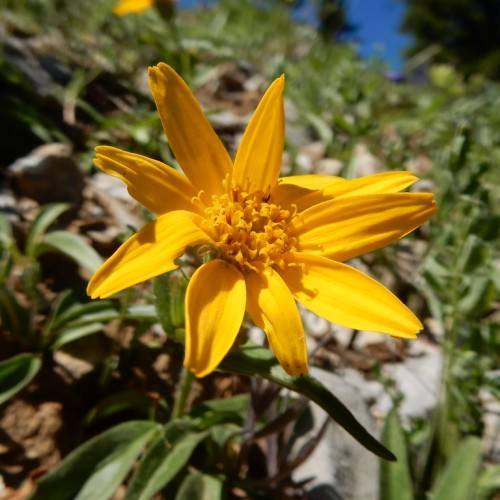
Rydberg's Arnica
Arnica rydbergii
Also Known As - Subalpine Arnica,Subalpine LeopardbaneWatering:
Minimal
Hardiness Zone:
Sun:
full sun,part shade
Growth Rate:
Low
Care Level:
Medium
watering
Sticky Arnica (Arnica ovata) should be watered once or twice a week. During warmer months, the plant should be watered deeply to ensure their root systems remain hydrated and healthy, while over-watering should be avoided. During cooler months, allow the soil to dry out slightly between waterings. The amount of water needed will vary depending on the size of the plant, soil type, pot size, and climate, so be sure to adjust accordingly. It is best to water thoroughly and let the excess water drain away from the base of the plant to avoid soggy soil. The leaves and stems of the plant should be monitored for signs of wilting or yellowing, which can indicate a need for additional water.
sunlight
The Sticky Arnica plant (Arnica ovata) grows best in full sun conditions (at least 6 hours of direct sunlight per day). This plant thrives in areas with mild temperatures and high humidity, so it is important to place the plant in an area with good air circulation and bright, indirect sunlight (such as near a window or patio). The hours of sunlight should be consistent throughout the year for the plant to flourish. If the plant does not receive enough direct sunlight, it may become leggy and lose its flowering potential. When possible, choose a location where the sun will hit the plant for a minimum of 6 hours a day.
pruning
Sticky Arnica, or Arnica ovata, should be pruned once a year, preferably in the fall after it has finished blooming. Pruning this plant should be done with care as it is quite brittle and easily damaged. Make sure to have a pair of sharp, sterilized pruning shears. Remove stems and branches that are dead, dying or diseased in order to keep the plant healthy. Also, remove any stems that are out of place or are blocking the flow of sunlight and airflow to other parts of the plant. When pruning, make sure to cut back the stems no more than 1-third of its current height, and always leave a few of the ends of stems on each main stem. Pruning Sticky Arnica is an essential part of keeping the plant looking tidy and healthy.
